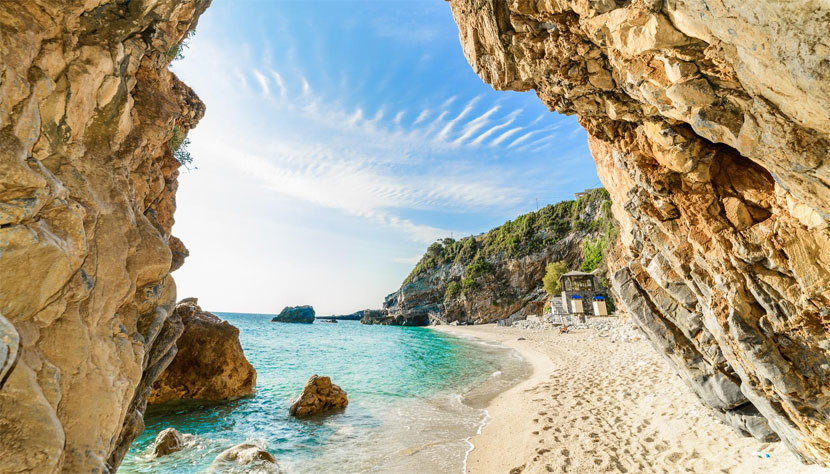Tuesday, September 12, 2023

As the mythical Greek summer season winds up, visitors pack the small, white-washed streets of one of the country’s most iconic destinations: the island of Santorini.
Tourism is a lifeblood of the Greek economy, accounting for about 25 percent of it, and 90 percent of Santorini’s economy is dependent on selfie-stick-wielding visitors.
It has become a double-edged sword for Santorini as the island’s 15,000 residents can see up to two million yearly visitors.
Placards placed around Santorini’s villages remind tourists to respect the homes and holy sites.
George Sarelakos, founder and president of an organisation working to protect the marine environment, told a news agency that high visitor numbers also presented an increasing environmental risk to Santorini, particularly given the island’s lack of drinkable tap water.
The organisation has undertaken activities such as encouraging many of the luxury yachts which dock on the island for onboard recycling and has organised harbour-cleaning activities.
With many Greeks earning only about 800 euros ($857) a month, rising costs have also meant some are priced out of popular tourist destinations with the average price for a hotel in Santorini being about 150 euros ($160).
Beach piracy
Paros, a Cycladic neighbour of Santorini which has a total of 12,000 permanent residents, saw 560,479 ferry arrivals in 2021 and has also had renewed focus on tourist footfall.
This summer locals protested against the swarms of privately owned sunbeds and parasols taking up large stretches of sand and charging about 100 euros ($107) for a set, leaving no space for others to use the beach.
Some businesses received permits to use the beach, but residents pointed out they often started putting loungers well beyond the agreed limits, meaning others could not lay their towels on the sand.
Christos Georgousis, a retired teacher and permanent resident of Paros, said residents were tired of the continuous occupation of swaths of sand by expensive sunloungers.
Struggling key workers
Paris Tsartas, professor of tourism development at Harokopio University of Athens, told a news media that the issue of “overtourism” was particular to a number of oversaturated destinations such as Santorini and Mykonos, presenting problems notably for key workers such as doctors who often struggled to find accommodation.
The rents are sky high. And this is, of course, related to overtourism. So they prefer to rent their houses to the tourists, and not to the people who are involved in all these very vital sectors, he said.
Tsartas said he expected overtourism to become a bigger headache in the next five to 10 years.
Meanwhile, Greece expects another bumper year for tourism.
Data from a ship tracking platform, revealed Mykonos hosted 209 cruise ships from June to August this year, a 35 percent increase from last year during the same period. June peaked with 72 arrivals.
Meanwhile, Santorini saw 203 vessels, with July leading at 74 arrivals.
Georgios Hatzimanolis, head of global communications at Kpler, which owns MarineTraffic, told a news chanel that this summer Mykonos averaged two cruise ships a day with peaks of six.
The surge in cruise tourism is not only an environmental concern but also threatens to tarnish Mykonos’ luxury reputation.
Protecting the Acropolis
Efforts are already being made to tackle some of the potential harm of mass tourism.
At the country’s most iconic landmark, the Acropolis, there are plans to limit visitors to 20,000 a day with a timed ticketing system to tackle overcrowding and protect the historic site.
Lina Mendoni, Greece’s culture minister said that obviously, tourism is desirable for the country, for all of us. But they must work out how excessive tourism won’t harm the monument.
Authorities have previously said tackling overtourism is a “top priority”.
Tags: cruise tourism, greece, Hotel, overtourism, tourist destinations
Monday, January 1, 2024